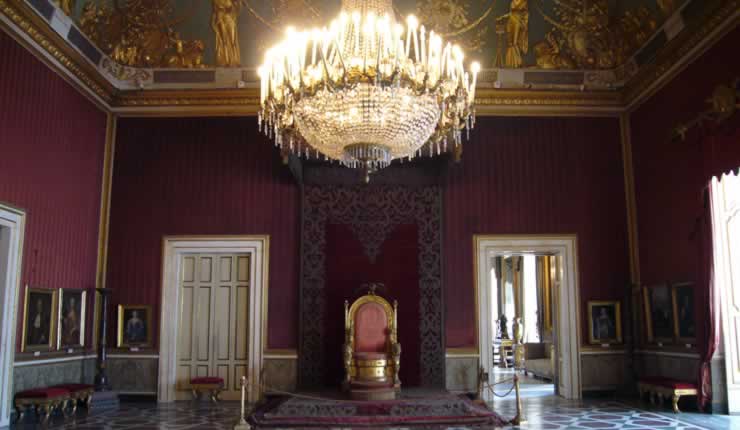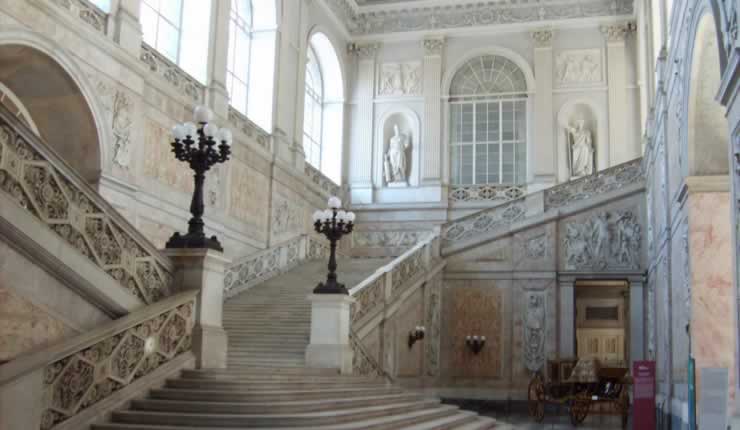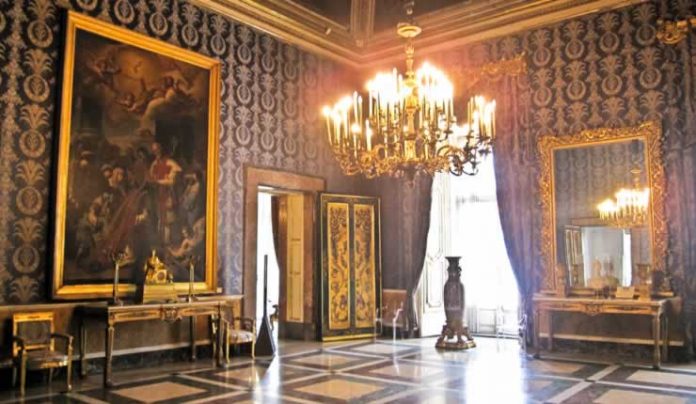The Royal Palace of Naples is one of the most imposing and celebrated monuments in the city. An architectural gem, museum, and cultural hub, it dominates Plebiscito Square, one of Italy’s most important and charming squares. The Royal Palace served as the residence for Spanish and later Austrian viceroys, the Bourbon dynasty, the French, and finally the Savoy, narrating the history of Naples from the 17th century until the Unification of Italy.


History of the Royal Palace of Naples
Construction of the Royal Palace of Naples began in the 1600s, commissioned by the Spanish Viceroy Fernando Ruiz de Castro, who sought to provide the city with a residence worthy of its political and economic significance. The architect in charge of the project was Domenico Fontana, who designed a simple and austere structure inspired by the model of the Escorial Palace in Spain. Its was expanded and embellished in the succeeding centuries, with contributions from other architects such as Luigi Vanvitelli, Ferdinando Sanfelice, Francesco Antonio Picchiatti, and Gaetano Genovese, who added Baroque and Neoclassical elements. The palace attained its final appearance in 1858 with the completion of the main façade on Plebiscito Square, designed by Gaetano Genovese.

Curiosities
The Royal Palace of Naples is rich in curiosities and anecdotes that make the visit even more fascinating. Here are some of the most surprising facts:
- The palace houses a collection of equestrian statues of the kings of Naples, adorning the main façade. Notably, there is a statue of Charles III of Bourbon, the first king to permanently reside in the palace. The statue of Charles III was sculpted by Antonio Canova, the renowned Neoclassical sculptor who, unfortunately, did not live to see its completion as he passed away before its inauguration.
- The palace preserves a series of tapestries from the Gobelins and the Royal Factory of Naples, designed by Luigi Vanvitelli and Ferdinando Fuga. These tapestries depict scenes from the history of Naples and the Bourbon dynasty, considered among the most beautiful and precious in the world. They are displayed in the Gallery and the Hall of Hercules, the two most majestic and sumptuous rooms in the palace.
- The palace is connected to the San Carlo Theater, Europe’s oldest opera house, through a covered passage called “the bridge.” The bridge allowed monarchs to access the theater without leaving the palace, providing them with a privileged loge to attend performances.
What to see in the Royal Palace of Naples
The Royal Palace of Naples offers visitors the opportunity to admire the Royal Apartments, the gardens, and the San Carlo Theater. The Royal Apartments consist of a series of rooms and halls furnished with precious furniture, paintings, marbles, stuccoes, and decorations that showcase the style and taste of the various monarchs who inhabited the palace. Some of the most important rooms include:
- The Grand Staircase, leading to the Royal Apartments, adorned with frescoes by Paolo De Matteis and sculptures by Pietro Bernini and Lorenzo Vaccaro.
- The Ambulatory, the corridor connecting the various rooms of the Royal Apartments, embellished with portraits of Spanish and Austrian viceroys and the kings of Naples.
- The King’s Apartment, including the Hall of the Halberdiers, the Throne Room, the Ambassadors’ Hall, the Dining Room, the Ballroom, the Bedroom, and the King’s Study. These rooms are decorated with works by artists such as Francesco Solimena, Giuseppe Bonito, Giacinto Diano, and Giuseppe Cammarano.
- The Queen’s Apartment, comprising the Audience Room, the Dining Room, the Bedroom, and the Queen’s Study. These rooms feature works by artists such as Angelica Kauffmann, Elisabeth Vigée Le Brun, Giuseppe Cammarano, and Francesco Hayez.
- The Gallery and the Hall of Hercules, the two largest and most imposing rooms in the palace, dedicated to the themes of heroism and glory. The Gallery is adorned with tapestries from the Gobelins and the Royal Factory of Naples, while the Hall of Hercules features frescoes by Luca Giordano and sculptures by Pietro Bracci and Tommaso Solari.
- The Palatine Chapel, the private chapel of the sovereigns, dedicated to Saint Francis of Paola. The chapel is decorated with polychrome marbles, gilded stuccoes, paintings by Giuseppe Bonito, and an altarpiece by Luca Giordano.
- View on Google Maps
- Distance 800 meters from Toledo Metro Station





